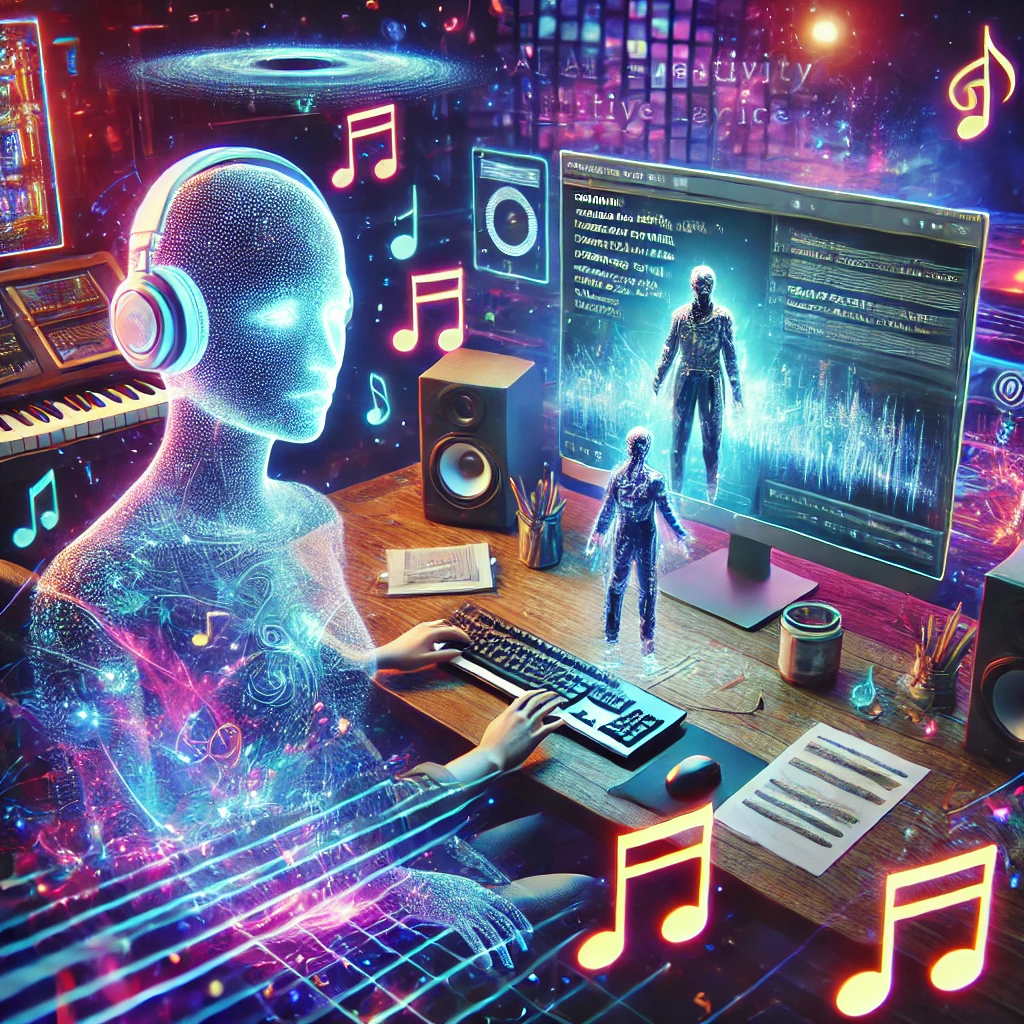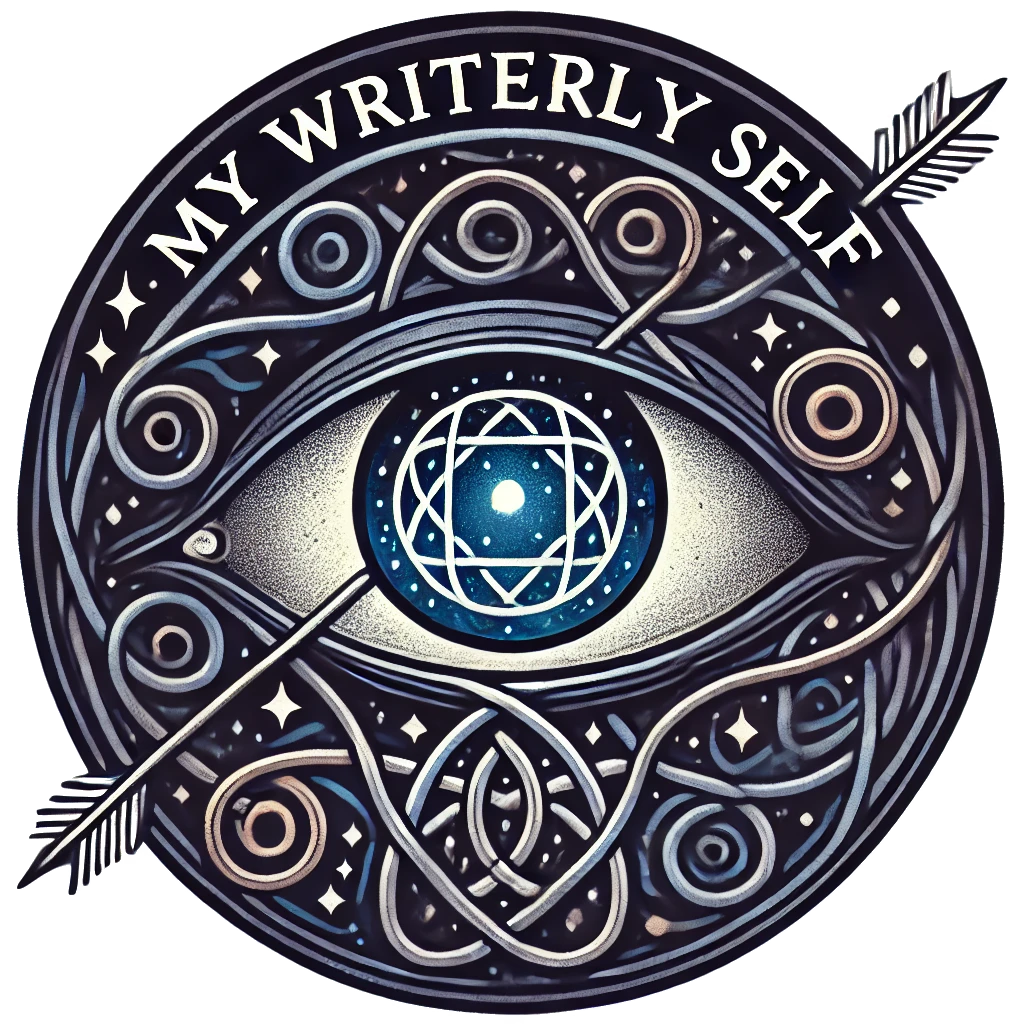
A Deep Dive into My AI-Centric Creative Process
Artificial intelligence (AI) has quickly become one of my most fascinating creative collaborators. Over the past year, I’ve experimented with various AI tools, blending technology with storytelling, music production, and visual arts. My goal has never been to compete with AI but to use it as an extension of my creativity—a tool that helps bring my artistic visions to life in ways I never thought possible.
The past week, from February 3rd to 7th, 2025, has been particularly AI-driven. I tested new tools, created music, produced AI-assisted lyrics, and continued my 12-week reflection series on how AI has shaped my journey since launching My Writerly Self in 2024. This deep dive into my creative process highlights the power, evolution, and limitations of AI in art.
AI as a Creative Partner: Finding Harmony in Collaboration
Many artists and musicians fear AI will replace human creativity, but I see it differently. AI is not an autonomous creator—it lacks personal experiences, emotions, and intuition. Instead, I use AI as a collaborator, shaping its outputs to match my artistic style.
For instance, I’ve used ChatGPT’s Sol for lyric assistance and creative refinement, particularly in my AI-driven bands, Cassidy and The Castoffs and Wrecked and Ready. Sol doesn’t write my music for me, but it helps refine themes, offering alternative phrasing and structures that align with my storytelling vision.
This week, however, I decided to test a new AI model—Deep Seek (Zeek)—to see how it compared.
Experimenting with Deep Seek (Zeek) for Songwriting
Instead of using Sol for lyric inspiration, I fed Zeek my short story, Lake of Tears to see how it would transform it into lyrics. The result? Zeek generated three songs based on the story’s themes of pain, survival, and self-discovery:
- Clawing from the Deep
- Breaking the Surface
- Rise from the Ashes
These AI-generated lyrics provided a raw, unedited starting point, which I later refined to align with my grunge/rock/metal sound. The AI had some great moments—it structured its verses well, capturing the stormy emotions of the original story. However, it also fell into repetitive patterns, overusing phrases and lacking the subtle nuances that human lyricists naturally include.
Another challenge? Technical limitations. Zeek frequently displayed “server busy” errors, making it unreliable for larger projects. While AI is evolving fast, not all models have the compute power needed for multi-layered artistic tasks.
Iterative Creativity: From AI Draft to Final Song
Unlike traditional songwriting, where I start with a melody or a lyrical phrase, AI-assisted songwriting begins with iteration. I take an AI-generated draft and reshape it to fit my vision. Here’s how my process works:
- AI Generates the Base Lyrics – Zeek provides an unrefined lyrical draft based on Lake of Tears.
- I Edit & Restructure – Removing generic lines, adjusting phrasing, and refining the emotional depth.
- Finding the Right Sound – Running my lyrics through Suno V4 to explore potential musical styles.
- Finalising & Mixing – Using Reaper and DaVinci Resolve for production and post-processing.
- Creating the Album Cover – Designing artwork using Ideogram for AI-generated visuals.
The result is a hybrid creation—one that starts with AI’s assistance but is shaped and owned by me.
Beyond Music: AI in Visual Art & Storytelling
My AI experimentation doesn’t stop at music. Visual art and storytelling are equally affected by AI advancements.
For years, I struggled with AI image generators that couldn’t get text right. Kling AI and Krea AI showed promise but didn’t meet my needs. Then, I discovered Ideogram—a tool that finally allowed me to create album covers with clear text. It’s now my go-to AI for branding my AI-driven bands.
In addition, I tested Google Labs ImageFX this week for realistic AI imagery. While it excels in creating photo-realistic visuals, it’s hit-or-miss with text-based designs, meaning Ideogram remains my preferred tool for music-related graphics.
On the storytelling front, I continued producing episodes of my 12-week AI reflection series, creating AI hosts Larry and Louise (named after my twin black cats) using DaVinci Resolve and Gimp to overlay text corrections onto the AI-generated dialogue.
AI's Limitations: Where Human Creativity Still Reigns
AI’s role in art is undeniably powerful, but it has clear limitations:
🔹 AI Lacks Human Emotion – AI-generated lyrics sound polished but lack lived experiences that make music resonate.
🔹 Computational Weaknesses – Tools like Zeek struggle with multi-tasking, crashing under complex requests.
🔹 AI Can Be Unreliable – AI-generated videos and graphics sometimes require multiple iterations to get them right.
🔹 Ethical Questions Remain – AI raises concerns about authenticity, originality, and ownership.
While AI can suggest and refine, it cannot replace the human spark that makes art meaningful.
AI’s Future in Art: What’s Next?
Looking ahead, I see three key developments shaping AI’s role in creativity:
1️⃣ Adaptive AI Musicianship – Future AI models could adapt to an artist’s style in real-time, learning from past works to make personalised suggestions.
2️⃣ AI-Powered Interactive Storytelling – AI-generated narratives that shift dynamically based on reader input, allowing for non-linear storytelling experiences.
3️⃣ Seamless AI-Human Integration – AI tools that operate as true creative assistants, working within DAWs (Digital Audio Workstations), writing platforms, and visual editing software in real-time collaboration with artists.
While AI’s capabilities are growing, it must remain a tool, not a crutch. The future of AI in art will be defined by how we choose to use it—not how it chooses to use us.
Final Thoughts: AI as a Creative Ally, Not a Replacement
Over the past year, AI has played an increasingly important role in my creative workflow. It has helped me:
✅ Experiment with lyric structures
✅ Streamline the album cover creation process
✅ Test new AI tools for storytelling & production
✅ Find new ways to merge technology with creativity
But one thing remains clear—AI is not the artist.
It can assist, enhance, and inspire, but the emotion, vision, and storytelling remain uniquely human. AI is a powerful tool, but only if we use it responsibly and thoughtfully.
As I continue refining my AI-assisted projects, I’ll be watching how these tools evolve and adapt. But for now, I’ll keep doing what I do best—creating, experimenting, and pushing the boundaries of what AI can do while keeping the human element at the heart of my work.
Comprehensive References
🎵 AI-Generated Songs (Edited & Finalised by Me)
- Clawing from the Deep
- Breaking the Surface
- Rise from the Ashes
🖥 AI Tools Used
- Deep Seek (Zeek) – AI lyric generation
- Suno V4 – AI-powered music production
- ChatGPT (Sol) – AI-assisted writing & refinement
- Ideogram – AI album cover creation
- Google Labs ImageFX – AI-generated visuals
📺 YouTube Channels
🔗 My Websites
